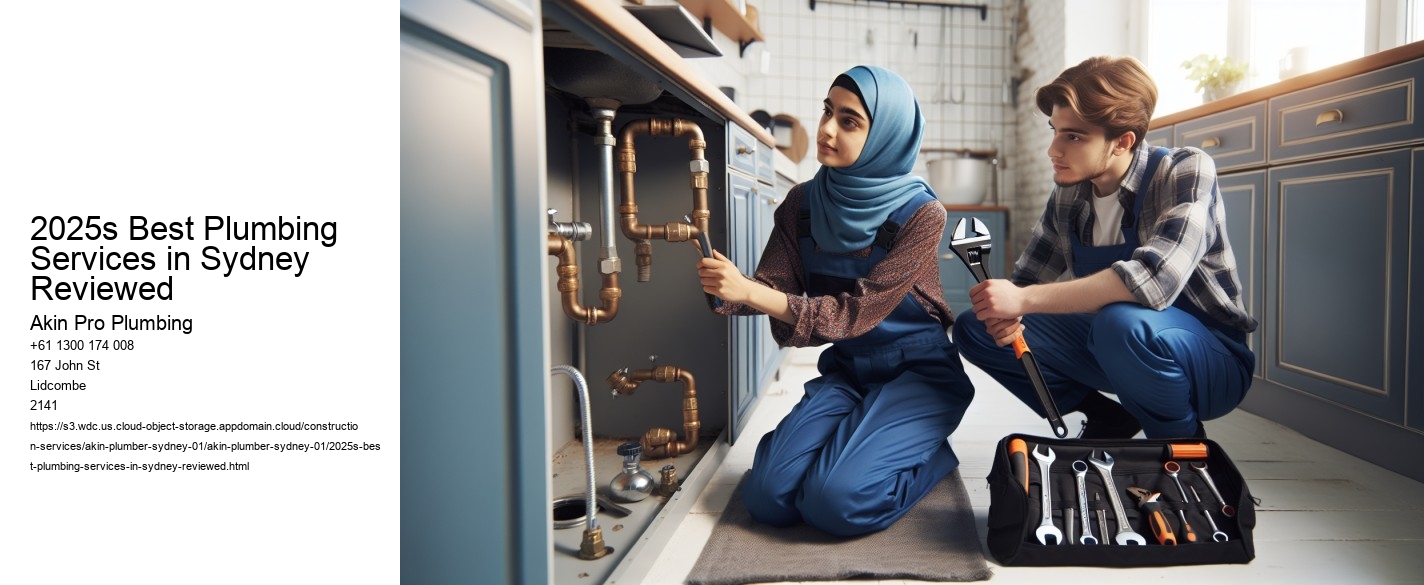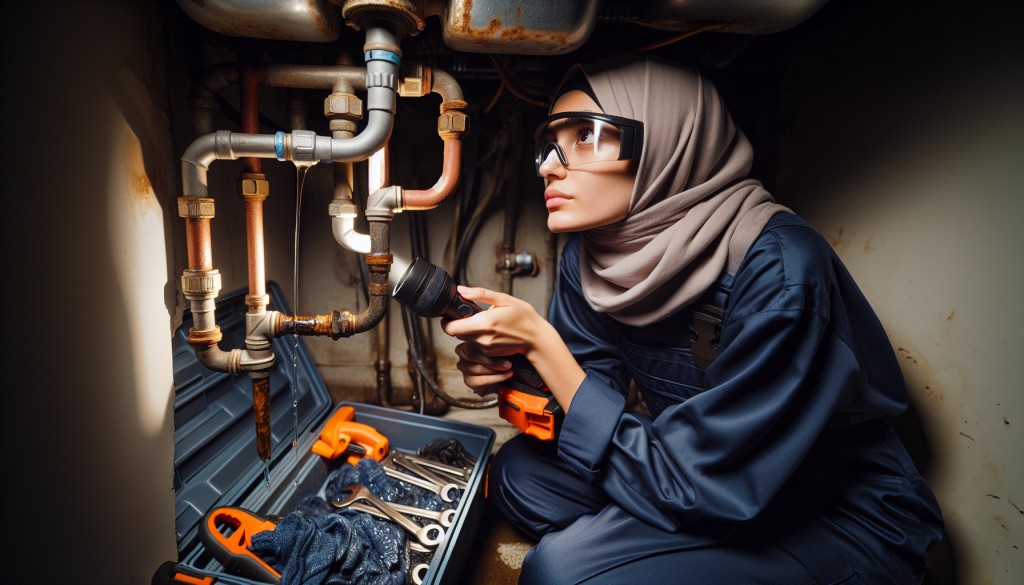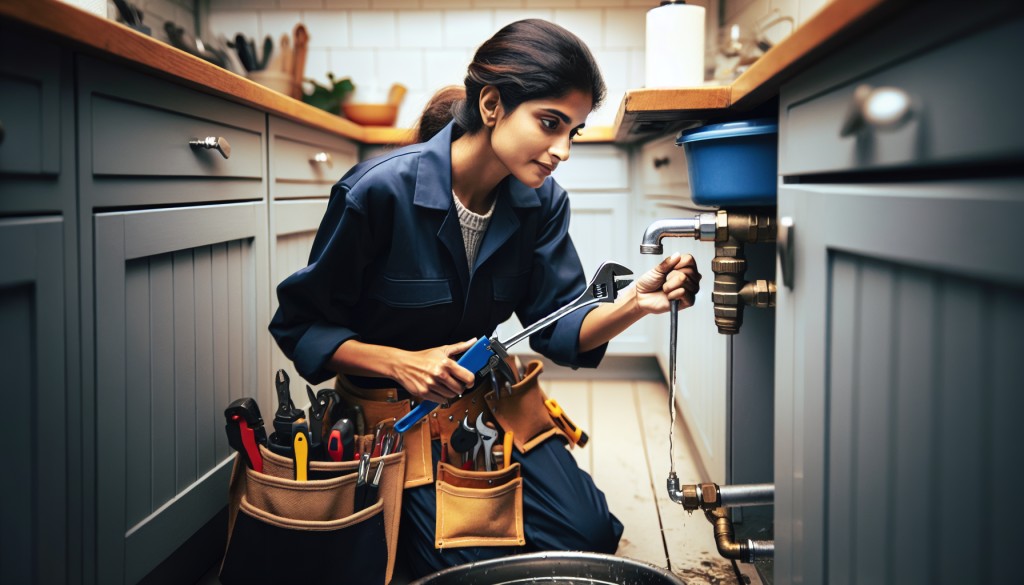
In the bustling metropolis of Sydney, where the iconic Opera House meets the serene waves of Bondi Beach, the demand for reliable and efficient plumbing services is ever-present. Water Conservation Efforts by Sydney Plumbers . As the city continues to grow and modernize, so does the need for top-notch plumbing solutions that can cater to both residential and commercial needs. In 2025, several plumbing services have stood out, earning accolades for their exceptional service, innovative solutions, and customer satisfaction. Here, we review the best plumbing services in Sydney that have set a benchmark in the industry.
At the forefront of Sydney's plumbing scene is Sydney Plumbing Masters. Known for their rapid response times and a team of highly skilled professionals, they have garnered a reputation for reliability and excellence. Their 24/7 emergency service ensures that residents and businesses are never left in a lurch when plumbing disasters strike. Customers rave about their transparent pricing and commitment to using environmentally friendly products, aligning with the city's push towards sustainability.
Sydney Plumbing Masters also offers a comprehensive range of services, from routine maintenance to complex installations. Their technicians are not only licensed and insured but also undergo regular training to stay abreast of the latest industry trends and technologies. This dedication to continuous improvement is a testament to their commitment to delivering top-tier service.

In an era where sustainability is paramount, EcoFlow Plumbing Solutions is leading the charge with their eco-friendly practices. They specialize in water conservation techniques and the installation of energy-efficient systems, making them a favorite among environmentally conscious Sydneysiders. EcoFlow's innovative approach includes the use of smart technology to monitor and manage water usage, helping clients reduce their environmental footprint and save on utility bills.
Their clientele appreciates the personalized service and attention to detail that EcoFlow provides. Whether it's a simple leak repair or the installation of a rainwater harvesting system, EcoFlow ensures that each project is executed with precision and care. Their commitment to sustainability is not just a business model but a passion that resonates with their growing customer base.

Harbour City Plumbing has been a staple in Sydney's plumbing industry for over a decade. Their longevity in the business speaks volumes about their expertise and customer loyalty.
What sets Harbour City Plumbing apart is their focus on customer education. They believe in empowering their clients with knowledge, offering tips and advice on maintaining plumbing systems efficiently. This proactive approach not only prevents future issues but also builds trust and rapport with their clients. Their dedication to quality workmanship and customer care has made them a trusted name in the Sydney community.

For those who prioritize speed and efficiency, RapidFix Plumbing Services is the go-to option. Specializing in emergency repairs, they pride themselves on their ability to resolve plumbing issues swiftly without compromising on quality. Their team is equipped with the latest tools and technology, ensuring that they can tackle even the most complex problems with ease.
RapidFix's commitment to customer satisfaction is evident in their no-nonsense approach and clear communication. Clients appreciate their honest evaluations and upfront pricing, which eliminates any unwelcome surprises. In a city where time is of the essence, RapidFix's ability to deliver prompt and effective solutions has earned them a loyal customer base.
As Sydney's infrastructure continues to expand, so do its drainage challenges. AllClear Drainage Experts specialize in addressing these issues with innovative solutions tailored to the city's unique landscape. From blocked drains to advanced CCTV inspections, AllClear combines technology with expertise to provide comprehensive drainage solutions.
Their team is renowned for their problem-solving skills and meticulous attention to detail. AllClear's approach is thorough, ensuring that not only are immediate issues resolved but potential future problems are also identified and addressed. Their commitment to excellence and customer satisfaction has made them a leader in Sydney's drainage sector.
As we look towards 2025, the plumbing services in Sydney are not just about fixing leaks and unclogging drains; they are about innovation, sustainability, and customer empowerment. The standout companies reviewed here exemplify these qualities, setting new standards in the industry. Whether it's the eco-friendly solutions of EcoFlow Plumbing Solutions or the rapid response of RapidFix Plumbing Services, Sydney residents are spoiled for choice with top-tier options that promise reliability and excellence. As the city continues to evolve, these plumbing services will undoubtedly play a crucial role in shaping a sustainable and efficient future.
Cabling and piping at the LHC highlight the synergy between mechanical, electrical, and plumbing systems.
MEP engineering involves the design and installation of essential systems that provide services to occupants in buildings. In both homes and businesses, such systems are typically developed by qualified design teams.
The MEP layout is crucial for infrastructure development, cost estimation, future upkeep, and detailed reporting.
Rather than simply installing gear, MEP involves deep design of these systems. For instance, a technician might install a high-capacity boiler based on common codes. On the other hand, MEP designers engineer the most efficient layout, considering thermodynamics, and then hand off precise specs to the tradespeople.
To work in MEP, those involved need a wide knowledge base—including mechanics, heat transfer, fluid flow, electricity, and computation.
Historically, MEP drawings were created manually, which made coordination difficult. In modern times, software tools like computer-aided design tools and integrated design software make this easier with digital design, parametric changes, and real-time simulation. In some cases, GIS are also used to track infrastructure.
The mechanical part, often linked to heating and ventilation, includes systems for thermal comfort, such as psychrometrics and humidity regulation. Advanced facilities may use custom-built systems to minimize energy waste, sometimes saving up to half the power consumption compared to traditional cooling.
Every drop counts—so MEP engineers compare options like heat pumps against building constraints and lifecycle cost.
All structures today includes standard wiring between low to mid voltage ranges, with copper wiring run through concealed routes. Lighting and sockets are typically on independent loops for safety.
For industrial loads, higher voltage setups must be accounted for in schematics to support motors and transformers.
Telecoms and IT like networking and security systems are also sometimes known as MEPIT. These are typically installed by low-voltage experts separate from the main electricians.
Water and gas infrastructure are essential for human use, providing drainage and stormwater handling. In commercial setups, they may also support advanced lab setups or factories.
Additionally, plumbing helps with cooling systems—like moving air and thermal control elements. Air ducts may be installed separately.
A plumbing appliance is a removable device that is installed in a plumbing system to deliver and remove water.
=== Typical Water Fixtures ===
Common water-supplying fixtures are:
Sinks
Showers
Soaking tubs
Bidets
Water bubblers
Faucets and their accessories
Dishwasher valves
Ice maker valves
Channel drains
Urinals
Flush toilets
=== Waste Handling in Fixtures ===
Most fixtures include one or more exit points and drainage connections. Many also include:
A maximum fill level
An backup drain to prevent spillage
A drain stopper to hold water in the basin (for sinks, tubs)
Toilets and open showers usually don’t have overflow protection due to their open-drain nature.
Each fixture has its own supply connection method. Standard practice includes shutoff valves before each fixture. Supply lines are often:
Braided supply tubes
Rigid tubes
Hot and cold lines
Toilets usually have a flat neoprene washer, while sinks use a conical one. Tubs and kitchen faucets may be soldered or fitted with compression joints directly to the water supply.
=== Drain Mechanisms ===
Key parts of drainage include:
The strainer (main exit of the basin)
The tailpiece (connects to the trap)
The wax ring (seals a toilet base to the flange—usually beeswax or synthetic)
Proper seating and alignment of toilets are vital to ensure sealing and prevent leakage.
=== Traps and Vents ===
All fixtures are designed with traps—U- or S-shaped bends that hold water, creating a seal that blocks sewer gases. Examples:
Integral traps: Found in toilets, urinals
External traps: Found under sinks and tubs
Venting is essential to avoid siphoning water out of the trap or pressurizing the sewer gases. Lack of venting can cause bad smells.
=== Smart Fixtures ===
Public restrooms increasingly use:
Automatic flush toilets
Sensor urinals
Infrared taps
Automated hygiene systems
Benefits:
Reduced contact
Less water waste
Fewer mechanical parts
Some smart flushers adjust the volume based on traffic, avoiding unnecessary full flushes.
Drawbacks:
Some users dislike unexpected flushing
Children may be startled
Some parents use sticky notes to cover sensors
Installation requires both a plumber and an electrician, and troubleshooting can be harder due to the microelectronics involved.
=== Fixture Standards ===
Some of the widely recognized standards include:
ASME A112.18.1 – Plumbing Supply Fittings
ASME A112.18.2 – Plumbing Waste Fittings
Fixtures must comply with local building codes and health standards, especially those connected to both potable and non-potable water systems.
Fluid system fittings are components used to join sections of pipe or tubing, adapt diameter, and regulate fluid movement in a variety of systems. They’re found in potable water, irrigation, sewage, refrigeration, gas, petroleum, and industrial pipelines.
These fittings allow pipelines to go farther, split flows, or change size—making complex systems possible. Valves, a type of specialized fitting, let you stop or throttle fluid flow.
Fittings are made from materials that suit their use and connection method—common examples include:
— **Copper** (soldered joints)
— **Brass or iron** (threaded fittings)
— **Brass** compression fittings and adapters
— **PVC and CPVC** for wastewater systems
They’re installed by methods like soldering, solvent welding, screwing, compression fittings, plastic welding, and friction or push-fit joints.
Fitting types include:
— **Adapters**: connect different pipe types, manage expansion, or mismatch in diameter or thread.
— **Elbows** (45°, 90°): redirect flow, and come in short-, long-, or custom-radius styles.
— **Couplings**: join pipes of the same size, while **reducing couplings** connect different sizes.
— **Unions**: allow easy disassembly—great for maintenance or replacements.
— **Reducers and bushings**: shift pipe size down, either concentrically or eccentrically.
— **Tees and crosses**: split or join multiple flow lines—tees have three, crosses have four.
— **Caps and plugs**: seal open ends, either temporarily or permanently.
— **Barbs**: secure flexible hoses to plumbing lines.
— **Valves**: control flow—types include gate, ball, globe, needle, butterfly, diaphragm, or check valves.
Choosing materials and standards is important. Options include:
— **Metal**: copper, stainless or galvanized steel, cast iron, malleable iron, chrome-alloy steels
— **Non‑metal**: PVC, CPVC, ABS, PEX, HDPE, FRP
— **Brass/bronze** for corrosion-resistant fittings
— All parts must align with building/plumbing codes and materials compatibility (e.g., no mixing dissimilar metals without a dielectric union).
Gaskets are used at flange joints and come as:
— **Non‑metallic ring gaskets** (ASME B16.21),
— **Spiral‑wound** (ASME B16.20),
— **Ring‑joint gaskets** for RTJ flanges.
Inspectors rely on standards from:
— ASME (B36, B16, B31 series), ASTM, API, AWS, AWWA, ANSI, NFPA, MSS, CGA, PCA… and others to ensure safe, reliable systems.
In smaller systems, you’ll often use push-fit plastic or compression fittings. In industrial sites, you might see heavy-duty threaded or welded flanges.
Proper selection of pipe fitting type, material, and size ensures that your plumbing system is durable and long-lasting.
A plumber is a qualified worker who sets up and services networks used for clean water supply, hot water, sewage, and drainage. Plumbers play a vital role in both home, commercial, and industrial environments.
The word "plumber" originated from the Latin term "plumbum," meaning lead, because Roman-era plumbers often worked with lead piping. While lead is no longer used today, the name stuck around.
To become a plumber in Australia, one must complete a structured training program and earn a Certificate III in Plumbing. This often includes basic gas fitting training and allows the plumber to work under supervision on gas-related tasks. With experience, plumbers can apply for a full gas license.
Typical tasks include:
- Reading blueprints
- Laying and fixing pipes and fixtures
- Identifying plumbing issues and their causes
- Working with pipes
- Testing systems for leaks
- Adhering to building codes and safety regulations
In some countries, like Canada, plumbing standards are unified under programs like the Red Seal. In contrast, places like Colombia do not require official certification, although many plumbers train informally through family or trade schools.
In the UK and Ireland, formal qualifications and vocational exams are required. In the US, licenses and regulations vary by state, and many regions distinguish between journeyman and master plumbers.
Plumbers face a number of hazards, including electric shocks, cuts, falls, exposure to chemicals, and infectious diseases, especially when dealing with sewage. That’s why proper training and safety practices are critical.
Today’s plumbers also work with modern technologies like CCTV pipe inspections, water-saving systems, and high-pressure jetting equipment. Whether you're renovating a bathroom, fixing a leaky tap, or handling a burst pipe, a licensed plumber brings expertise, safety, and peace of mind to every job.
Plumbing is any infrastructure that conveys fluids for a range of applications. It typically includes pipes, valves, plumbing fixtures, tanks, and other equipment. While commonly associated with potable water systems and sewage removal, plumbing is also used in heating and cooling (HVAC), fuel gas systems, and other industrial uses.
The word “plumbing” comes from the Latin word *plumbum*, meaning lead. That’s right — our pipe-loving ancestors were already using lead pipes when most people were still figuring out fire.
Plumbing isn’t just a modern invention. Civilizations like Mesopotamia, the Indus Valley, and Egypt all developed early plumbing methods. In fact, they were already using clay sewer pipes as far back as 4000 BCE. The Indus Valley even had standardized earthenware piping with asphalt seals — that’s some serious engineering.
By 2400 BCE, Egyptians were already laying down copper pipes. And in Rome, the plumbing game peaked with lead aqueducts, intricate tile drainage, and a little light water theft prevention thanks to pipe inscriptions.
Of course, things took a bit of a downturn after Rome’s fall. For about 1,000 years, sanitation meant tossing waste out the window and hoping for rain. It wasn’t until the 1800s that densely populated cities got their act together, creating separate sewer and water systems to fight disease.
Today, plumbing is more advanced and essential than ever. The main types include:
- Potable water supply (cold and hot)
- Plumbing drainage and venting
- Sewage and septic systems, with optional greywater recovery
- Fuel gas distribution
- Rainwater and stormwater management
- Hydronic heating and cooling systems
Water pipes themselves have evolved, too. While Romans used lead, today we prefer copper, PEX, and PVC (with fewer health hazards). Fun fact: wooden water pipes were used in places like London and Philadelphia up until the 1800s — they sealed them with hot animal fat. Tasty.
From lead to copper, and wood to plastic, plumbing continues to evolve — but the goal remains the same: keep clean water flowing in and the nasty stuff flowing out. Just maybe with fewer explosions.
A plumber wrench, also known as a Swedish wrench, is a heavy-duty wrench designed to grip and twist plumbing pipes with mechanical advantage.
Unlike traditional wrenches, the plumber wrench uses a threaded ring to adjust jaw width, allowing for quick size changes without the need for a lock nut. It’s especially useful for working on plumbing fittings, and even hex nuts. But be careful — if used improperly, it can crack delicate piping.
The invention of this tool dates back to 1888, when Swedish inventor Johan Petter Johansson developed the plumber wrench. He also revolutionized the adjustable wrench design with a patent in 1891, making him a key figure in hand tool history.
Currently, the plumber wrench is more commonly found in Europe than in North America, where other designs like the Stillson wrench and channel-lock pliers are more common.
Plumbers and technicians use this wrench for:
- Securing threaded pipes
- Loosening stubborn fittings
- Holding firm on round surfaces
- Removing pipes without damaging them
Its design provides tight clamping with less physical effort, making it a favorite for jobs requiring precision and power.
While newer tools exist, the plumber wrench remains a classic addition to any plumber’s toolkit. With its clever design and longstanding origins, it’s a true example of functional innovation in plumbing history.
Professional Plumbing Services truly lives up to its name ! Thy offer excellent prices and are incredibly prompt in their responses. Adem is reliable and super trustworthy. I felt confident leaving the job in their hands, and they exceeded my expectations. Highly recommend them for any plumbing needs!
I recently purchased an investment property which required a thorough inspection. as I was searching for a plumber local online who looked reliable. I came across Akin Pro Plumbing. Adem took my call and came out to inspect so he could provide a clear quote and did not charge any call outs. I ended up proceeding with him as he was very responsible friendly and has a lot of knowledge in the field which lack these days. The quality Of his service are exceptional and prices are very reasonable. I highly recommend Akin Pro Plumbing to those looking for a local plumber who is trustworthy, professional and affordable. All the best !
I highly recommend Adem’s plumbing services. I have found him to be highly professional and knowledgeable. He performs his services in a timely and thorough manner and cleans up after the job has been completed.